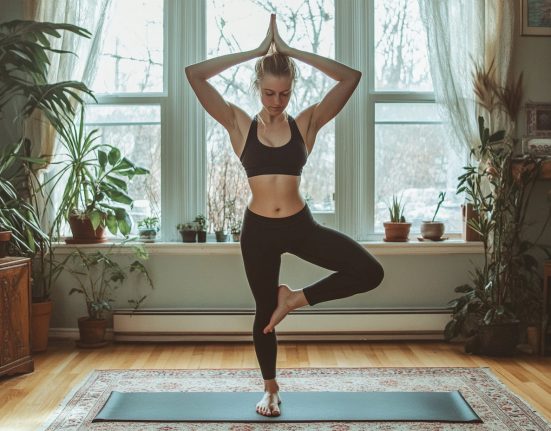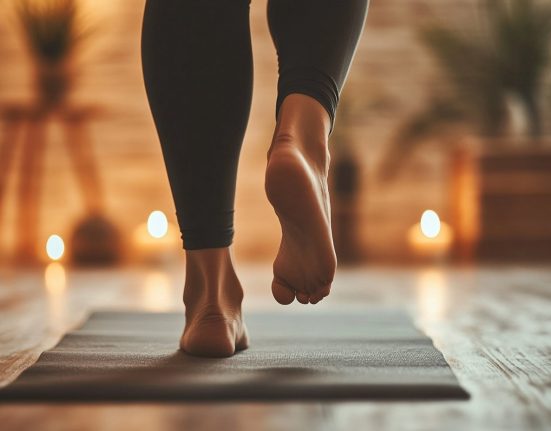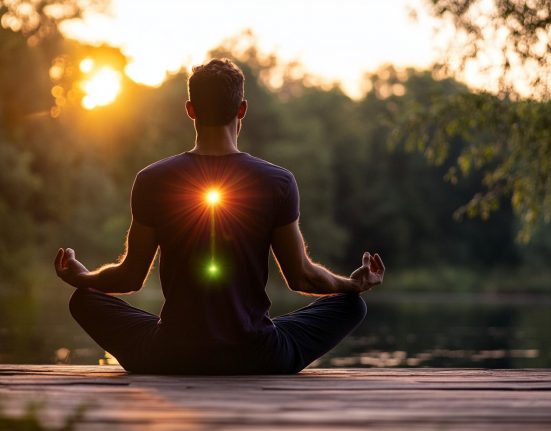Ready to start meditating your way to better physical and mental health? These tips will help you make daily meditation a habit.
The daily meditation habit
Brush your teeth: check. Take a shower: check. Walk your dog: check.
Meditate: check.
If that sounds like your average morning, congrats. You’ve successfully incorporated meditation into your routine, and there’s a good chance you’re already reaping the rewards.
The science-backed benefits of meditation are extensive and include lower blood pressure, less anxiety, reduced pain, relieved stress, and better sleep.
Is yours more of a rush-out-the-door-with-mismatched-socks type of morning? You can still gain the health benefits. The key is to make meditation a daily habit. Here’s how to do it.
Step 1: Choose your practice
Thinking of starting to meditate? First you’ll need to decide which type of meditation you do. (Yep, there are more than one.)
“The best meditation practice is the one that you actually do,” says Cortland Dahl, PhD, chief contemplative officer at Healthy Minds Innovations and a research scientist at the Center for Healthy Minds at the University of Wisconsin-Madison.
There are many schools of meditation out there. The biggest difference between one type and the next is the object of your focus. (Hint: none of them center on your racing thoughts.)
The overarching goal is to shift your attention to the present moment and clear your head. Some practices, like mindfulness meditation, focus on breath. With others, you’ll repeat a personalized mantra or incorporate movement. Find the practice that speaks to you by trying out some free meditation apps or courses.
Once you’ve chosen your mediation type, you’re good to go. You don’t need much else besides a quiet spot with limited distractions, a comfortable posture, and an open mind.
Step 2: Link your practice to an existing habit
There is no one-size-fits-all time to meditate.
Morning meditation is popular, largely because morning tends to be less hectic than other times of day. If you’re an early riser, it’s a great way to start your day on the right foot. And it can ensure you check off your meditation to-do right away, when life’s busyness is less likely to interfere.
But if you aren’t a morning person, the odds of you waking up earlier each morning to sneak in a meditation session are pretty low, says Neda Gould, PhD, director of the mindfulness program at Johns Hopkins University in Baltimore. And if you do manage to drag yourself out of bed, you might end up snoozing through your meditation session.
That said, certain types of meditation may be more suited to specific times of day.
Body scan meditation, which involves mindfully scanning your body from your feet to your head for sensations of tension, can be part of your bedtime routine, says Kimberly Quinn, PhD, a psychology professor and the well-being/success program coordinator at Champlain College in Burlington, Vermont. “This is a wonderful way to self-soothe and put yourself to sleep, and you can make it into a nightly habit,” she says.
To do it, turn off your devices. Start with your feet and work your way up your body, Quinn says. This is one of several mindfulness tricks that can help you fall asleep faster.
No matter when you meditate, tack your practice onto something that you already do with regularity and ease, she says. This is known as habit stacking—that is, forming a new habit.
Let’s say you wake up at 8 a.m., brush your teeth, and drink a cup of coffee each morning without fail. This may be good time to meditate for you.
If, however, you are more of an evening person, add meditation to your post-dinner ritual instead. After you clear the table and before you begin your nightly Netflix binge, meditate for 10 to 20 minutes.
“It is less about the time of day and more about piggybacking on an existing routine that does the trick,” says Dahl.
Step 3: Set goals
Don’t overwhelm yourself with big changes at first. Instead, set small and actionable goals that state when you will meditate and for how long. “Keep it small, and give yourself some easy wins,” says Dahl.
For instance, promise yourself that you will meditate for 10 minutes after your a.m. coffee for one week. “Forget about next month or next year and just focus on this week,” he says.
That’s right: only 10 minutes. That’s not long, but experts say longer isn’t necessarily better. How long you meditate is less important than how regularly you do it. Try this 5-minute meditation to start and build from there.
Step 4: Troubleshoot what isn’t working
Check in with yourself after a week of meditation. Were you able to meet your mark? Why or why not?
If something wasn’t working, tweak it and do the same exercise for the next two weeks. If you were too jittery after your coffee to sit still, consider moving your practice to before that morning cup of java, Dahl says.
Step 5: Be patient
You won’t become less stressed, less anxious, or more carefree overnight. “Usually the sweet spot is 30 to 60 days for starting to see the benefits of meditation,” Dahl says.
Still, a single mediation session can help you feel better. And that can help you stick to the practice long enough for it to become a habit.
All habits have three things in common: a cue, a routine and reward, Quinn says. When it comes to mindfulness meditation, your cue may be your racing mind and feelings of panic. Your routine would be taking deep breaths. “This is a neurological reset and brings the mind out of next Tuesday or wherever it has run off to and back into your body,” she says.
The reward is that your anxiety is relieved immediately with the breath. That’s what locks the habit in, Quinn says.
Once this routine takes hold, you will be more sensitive to your racing mind and instinctively take a mindfulness break when it creeps up on you, she says. All of this makes it easier to form a habit. And once you’ve done a habit for a couple months, you’ll start to notice positive changes in your life.
What not to do
Yes, creating a habit is the best way to reap the many benefits of meditation, but be careful not to fall into a common trap.
We are all overwhelmed with endless to-do lists and responsibilities. Don’t let meditation become another thing you have to do each day, Quinn says.
Forcing it is just one of many meditation mistakes that can stress you out.
Stressing about meditation defeats its purpose.
“Your practice doesn’t have to take any planning,” she says. “Just decide ‘I will do this mindfully’ and drop into the moment.”









